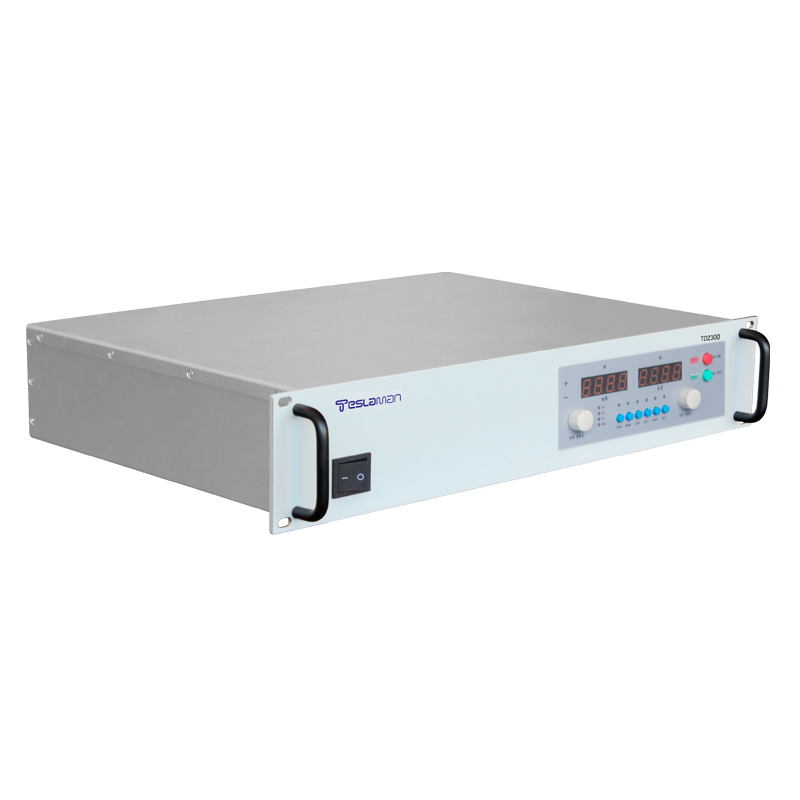Analysis of High-Voltage Power Supply Stability for Ion Implantation
In semiconductor manufacturing, material modification, and biomedical fields, ion implantation is a core process for precise doping. As the power heart of ion implantation systems, the stability of high-voltage power supplies directly determines the energy consistency of ion beams, spatial distribution uniformity, and process repeatability. This article analyzes the critical role of high-voltage power supply stability from three aspects: technical principles, influencing factors, and optimization strategies.
I. Impact of Stability on Ion Implantation Processes
Implantation Depth and Concentration Control
Ion implantation depth depends on the accuracy of the accelerating voltage. If the power supply output voltage fluctuates beyond ±0.05%, ion kinetic energy deviates, causing nanoscale shifts in implantation depth. For example, ultra-shallow junction (USJ) devices require boron implantation depths within 5–20 nm; voltage fluctuations may lead to junction depth non-uniformity, affecting transistor threshold voltage.
Beam Uniformity and Dopant Distribution
The power supply ripple coefficient must be below 0.01%. Experiments show that when voltage fluctuation reaches 0.1%, phosphorus dopant concentration deviation can exceed 15%, resulting in doping spots on the wafer surface and degrading device electrical performance consistency.
Ion Beam Collimation
Unstable output voltage causes ion beam divergence. Excessive ripple leads to ions gaining varying energies during acceleration, deviating from designed trajectories and reducing collimation accuracy—critical for nanoscale patterning (e.g., FinFET channel doping).
II. Core Factors Affecting Power Supply Stability
Circuit Design and Component Performance
Topology: Multi-stage LC filtering and closed-loop feedback circuits suppress output voltage fluctuations. For instance, digital control algorithms dynamically adjust PWM duty cycles to achieve voltage accuracy of ±0.01%.
Power Devices: Silicon carbide (SiC) or gallium nitride (GaN) components reduce conduction losses and minimize parameter drift from heating.
Thermal Management and Heat Dissipation
Heat from internal power devices alters electrical characteristics. Liquid cooling systems improve efficiency by 40% over air cooling, limiting temperature fluctuations to ≤1°C during prolonged operation and preventing thermal runaway-induced voltage drift.
Electromagnetic Compatibility (EMC) and Noise Immunity
Semiconductor fabrication environments exhibit strong electromagnetic noise. Magnetic shielding, common-mode filters, and grounding isolation suppress external interference by ≥60 dB, ensuring stable output.
Redundant Protection Mechanisms
Transient faults (e.g., overvoltage, overcurrent, arcing) can damage wafers. Multi-level protection circuits (e.g., nanosecond arc detection) cut off faulty paths within 10 μs and activate backup modules to ensure uninterrupted processes.
III. Stability Optimization Trends
Intelligent Control
AI algorithms and sensor networks monitor ion beam current, vacuum levels, and power status in real time. Machine learning models predict voltage fluctuations and dynamically adjust outputs for adaptive control.
Multi-Stage Glitch Monitoring
Modern beam monitoring systems distinguish between high/low-voltage power faults (e.g., filament burnout, magnet supply anomalies). When a glitch is detected, the arc voltage is cut off (instead of traditional extraction power) within milliseconds to minimize wafer loss.
Third-Generation Semiconductor Materials
SiC/GaN devices enhance switching frequency, while soft magnetic composites increase transformer efficiency. This combination achieves power densities of 50 kW/m³, reducing size by 40% while maintaining >94% efficiency.
IV. Conclusion
High-voltage power supply stability is the lifeline of ion implantation yield. Future advancements will focus on multi-dimensional stability integration: material innovations (e.g., ultra-wide bandgap semiconductors), intelligent control (digital twin models), and system-level protection (full-path glitch monitoring). These developments target ≤±0.005% voltage accuracy and <0.005% ripple, laying the foundation for sub-3nm chip fabrication and quantum device doping.




















